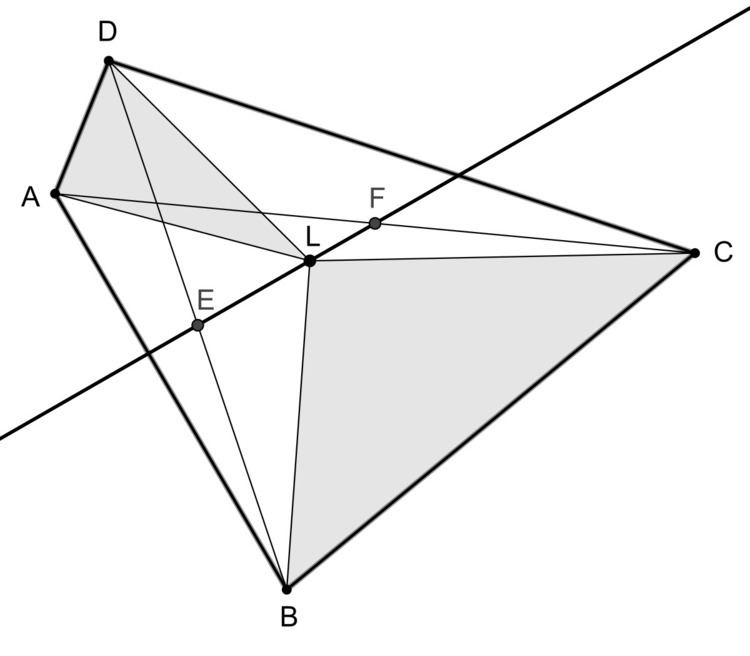 | ||
Anne's theorem, named after the French mathematician Pierre-Leon Anne (1806–1850), is a statement from Euclidean geometry, which describes an equality of certain areas within a convex quadrilateral.
Specifically, it states:
Let ABCD be a convex quadrilateral with diagonals AC and BD, that is not a parallelogram. Furthermore let E and F be the midpoints of the diagonals and L be an arbitrary point in the interior of ABCD. L forms four triangles with the edges of ABCD. If the two sums of areas of opposite triangles are equal ( Area(BCL) + Area(DAL) = Area(LAB) + Area(DLC) ), then the point L is located on the Newton line, that is the line which connects E and F.For a parallelogram the Newton line does not exist since both midpoints of the diagonals coincide with point of intersection of the diagonals. Moreover the area identity of the theorem holds in this case for any inner point of the quadrilateral.
The converse of Anne's theorem is true as well, that is for any point on the Newton line which is an inner point of the quadrilateral, the area identity holds.
References
Anne's theorem Wikipedia(Text) CC BY-SA
